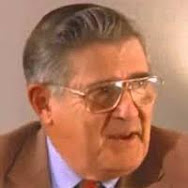Dr. Pim van Lommel writes: “For me it all started with curiosity—with asking questions, with seeking to explain certain objective findings and subjective experiences. Learning about near-death experience raised a number of fundamental questions for me. An NDE is a special state of consciousness that occurs during an imminent or actual period of physical, psychological, or emotional death. How and why does an NDE occur? How does the content of an NDE come about? Why does an NDE bring about such profound changes in someone’s life? I was unable to accept some of the answers to these questions because they seemed incomplete, incorrect, or unsubstantiated. I grew up in an academic environment where I was taught that there is a reductionist and materialist explanation for everything. And up until that point, I had always accepted this as indisputably true.
“Some scientists do not believe in questions that cannot be answered, but they do believe in wrongly formulated questions. In 2005 the journal Science published a special anniversary issue featuring 125 questions that scientists have so far failed to answer. The most important unanswered question, What is the universe made of? Was followed by, What is the biological basis of consciousness? I would like to reformulate this second question as follows: Does consciousness have a biological basis at all? We can also distinguish between temporary and timeless aspects of our consciousness. This prompts the following question: Is it possible to speak of a beginning of our consciousness, and will our consciousness ever end?
“To answer these questions, we need a better understanding of the relationship between brain function and consciousness. We have to find out if there is any indication that consciousness can be experienced during sleep, general anesthesia, coma, brain death, clinical death, the process of dying and, finally, after confirmed death. If the answer to any of these questions is yes, we must try to find scientific explanations and analyze the relationship between brain function and consciousness in these situations.
“What is death, what is life, and what happens when I am dead? Why are most people so afraid of death? Surely death can be a release after a difficult illness? Why do doctors often perceive the death of a patient as a failure on their part? Because the patient lost his or her life? Why are people no longer allowed to ‘just’ die of a serious, terminal illness but instead are put on a ventilator and given artificial feeding through tubes and drips? Why do some people in the final stages of a malignant disease opt for chemotherapy, which may prolong life for a short while but does not always improve the quality of their remaining life? Why is our first impulse to prolong life and delay death at all costs? Is fear of death the reason why? And does this fear stem from ignorance of what death might be? Are our ideas about death accurate at all? Is death really the end of everything?
“Even medical training pays scant attention to what death might be. By the time they graduate, most doctors have not given death much thought. Throughout life 500,000 cells in the body die every second, 30 million every minute, and 50 billion every day. These cells are all replaced again on a daily basis, giving a person an almost entirely new body every couple of years. Cell death is therefore not the same as physical death. In life, our bodies change constantly from one second to the next. Yet we neither feel nor realize it. How do we explain the continuity of this constantly changing body? Cells are building blocks comparable to the building blocks of a house, but who designs, plans, and coordinates the construction of a house: Not the building blocks themselves. So the obvious question is: What explains the construction and coordination of the ever-changing body from one second to the next?
“All bodies function the same on a biochemical and physiological level, yet all people are different. The cause of this difference is not just physical. People have different characters, feelings, moods, levels of intelligence, interests, ideas, and needs. Consciousness plays a major role in this difference. This raises the question: do we human beings equal our bodies, or do we have bodies?
Pim van Lommel, Consciousness
Beyond Life: The Science of the Near-Death Experience (HarperOne, 2010).










